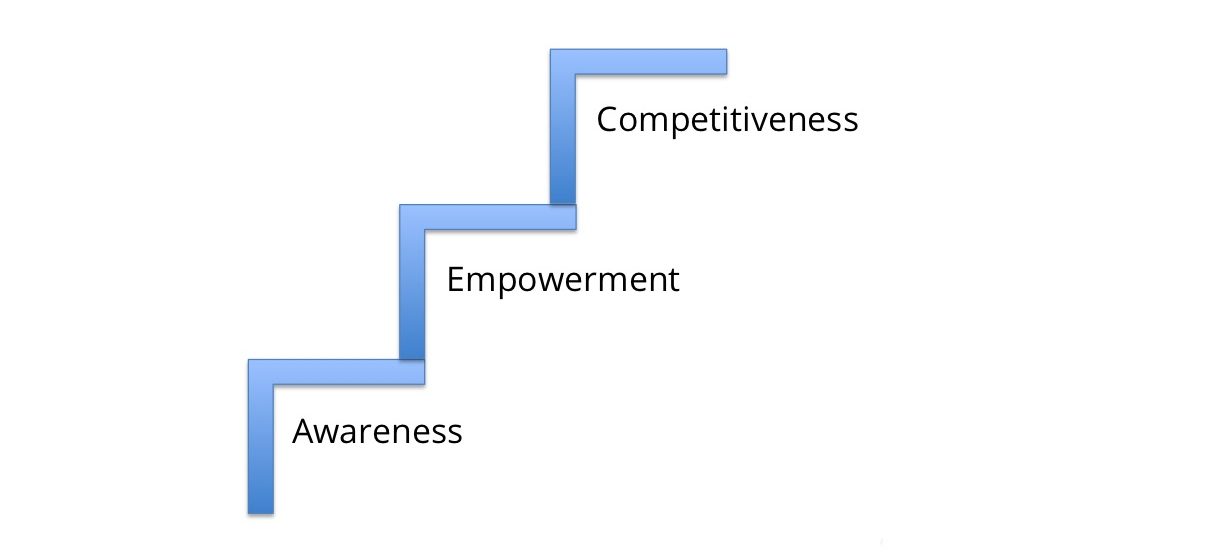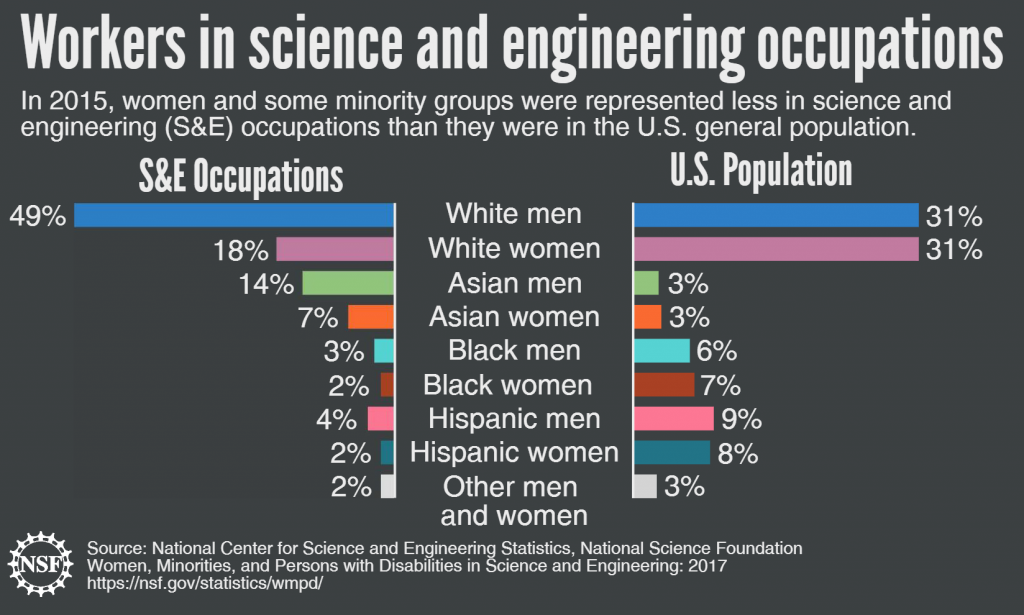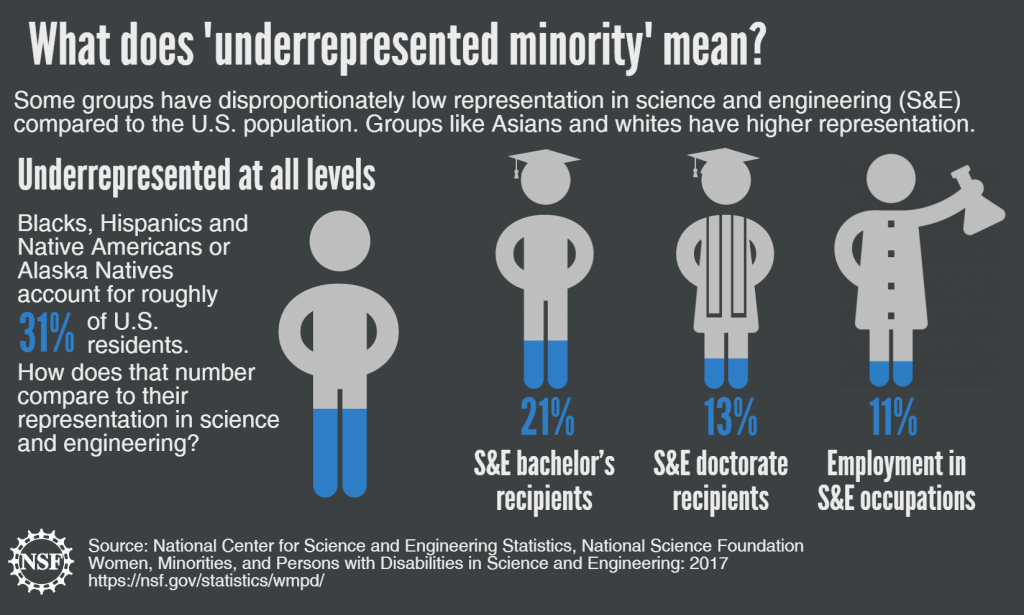
This is part three of a series on inclusive science- and technology-based innovation and entrepreneurship. Read parts one and two.
—
Those of us working at the interface of science- and technology-based innovation and entrepreneurial development have a unique opportunity and an ongoing responsibility to support inclusion and drive diverse participation in our field. But while we need to do all we can to support the success of individual science and technology innovators from underrepresented populations, we also need to develop the ecosystems that can generate a population of innovators that accurately reflects the demographics of our society.
But what exactly does “develop the ecosystems” mean? For us at VentureWell, it means two things: (1) making sure that innovators have access to the support they need at each stage of their development, and (2) working collaboratively in order to accomplish that goal.
Support along the innovator’s pathway
Think of it like a fish (one organism) in a pond (an ecosystem). If the fish has access to the right resources (food, oxygen, clean water), it will thrive. But if one of those elements goes missing, the ecosystem is out of balance and the fish will struggle.
It’s the same for innovators. If a student has access to a strong entrepreneurial ecosystem—a combination of the right people, programs and resources provided at the right time—she will have been put in position to succeed. But if an entrepreneurial ecosystem doesn’t have a balance of the things innovators and startups need to survive and thrive, generating them is like putting fish in a dry pond: unlikely to result in success. So how do we figure out what’s missing and foster a more welcoming and productive ecosystem?
We identify three stages in the development of innovators: awareness, empowerment, and competitiveness. Awareness is understanding that the world of STEM innovation exists as a viable career option: taking a course on it in school, learning about it at a local incubator, hearing about it from a mentor, etc. Awareness in a supportive environment ladders up to empowerment: believing you can be a successful innovator, learning the skills to be one by participating in a training program (like our E-Team Program), and taking a shot at inventing something new and starting a team or venture around a compelling idea. Competitiveness is the last stage: not only does the innovator have a venture, it’s got to be on par with the best to garner investment, grow, and make an impact on the world.

These stages apply to all innovators, not just those from underrepresented populations, and we believe that being intentional about expanding this successful model is key to supporting inclusion in entrepreneurship. If the appropriate pieces of the ecosystem exist at each stage—the people, programs and resources to stimulate interest, lead to empowerment and action at a competitive level—then we will be doing the best we can to support underrepresented populations.
Working together

The second key piece is understanding that no one organization or government entity has the ability to create this change alone: partnering with others and integrating resources is the best way to move forward. Awareness is rising that traditional approaches are not solving our most complex social problems, and that ecosystem fragmentation is part of the cause: funders select individual grantees, organizations work separately and compete, the philanthropic, corporate and government sectors provide resources that are often disconnected from each other, and the end result is a flurry of similar but disunited efforts that don’t build off of each other.

That needs to to change, and the good news is that it we seem to be heading toward greater collaboration. For example, the NSF recently launched the Nation of Communities of Learners of Underrepresented Discoverers in Engineering and Science (NSF INCLUDES) program, the goal of which is to broaden participation in STEM by facilitating partnerships, communication and cooperation between organizations. The approach is to engage a large number of the key organizations that work to encourage STEM inclusion to work together as a community. This reflects emerging research and new organizations that recognize that in order to make a fundamental shift, people from across education, industry, entrepreneurship and policy need to be involved.
If we want to eliminate race, gender, and socioeconomic status as predictors of who will participate and succeed as an innovator, then purposeful, system-wide change needs to occur. In order for that to happen at scale, we need to align across the government, non-profit, philanthropic, and corporate sectors as partners, actively coordinating action and sharing lessons learned. Great work on inclusion and diversity can no longer be done in silos.
Overcoming barriers to underrepresented populations participating in entrepreneurship will not be easy: the challenges and barriers are deeply ingrained in society. Yet a shift toward a society of inclusion is essential. Engaging more first-generation college students, women, people of color, and student veterans in entrepreneurship will not only increase basic fairness, it will result in greater economic growth, stronger entrepreneurial role models, and a healthy and innovative business community. Without diversity, vibrant ecosystems don’t thrive.